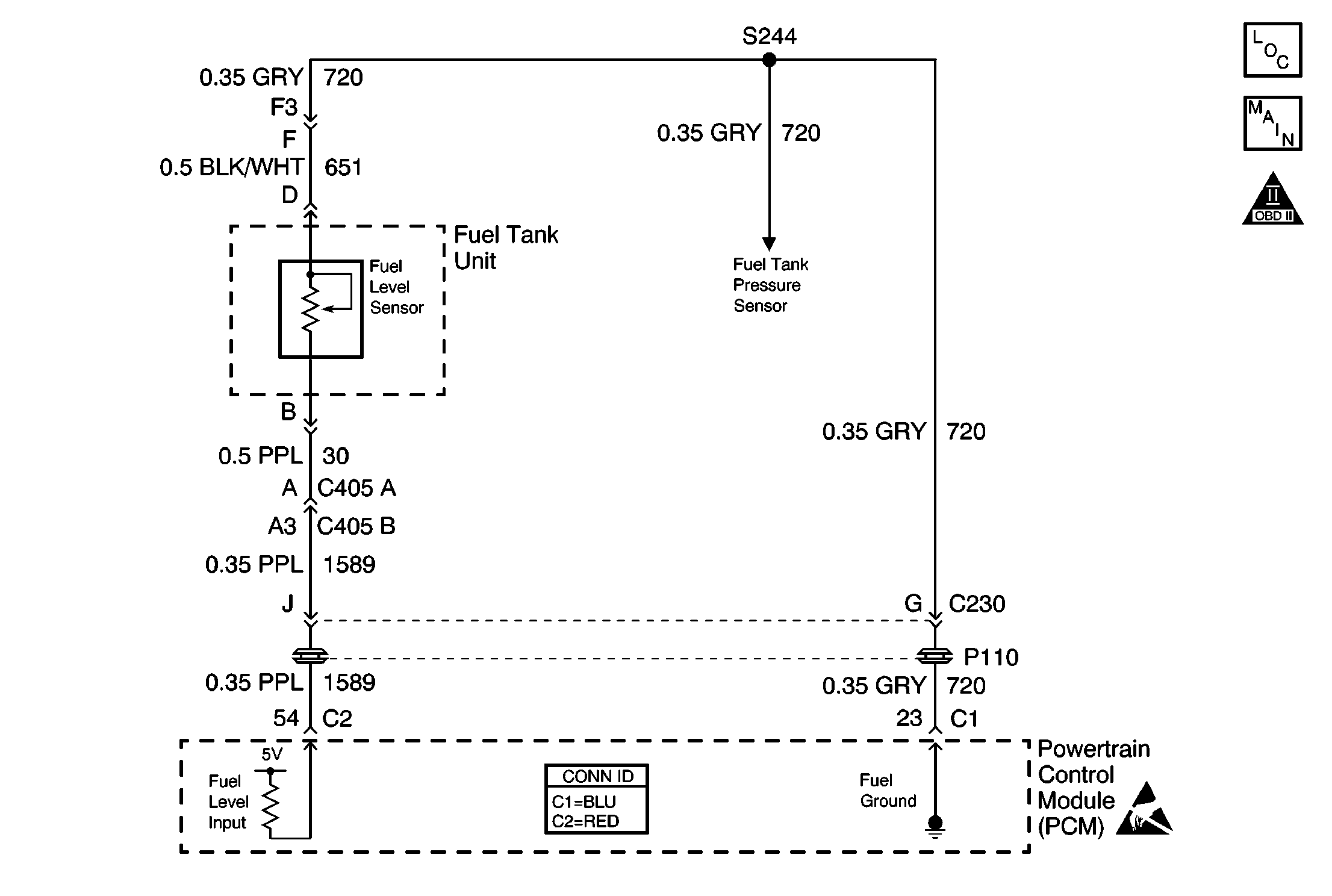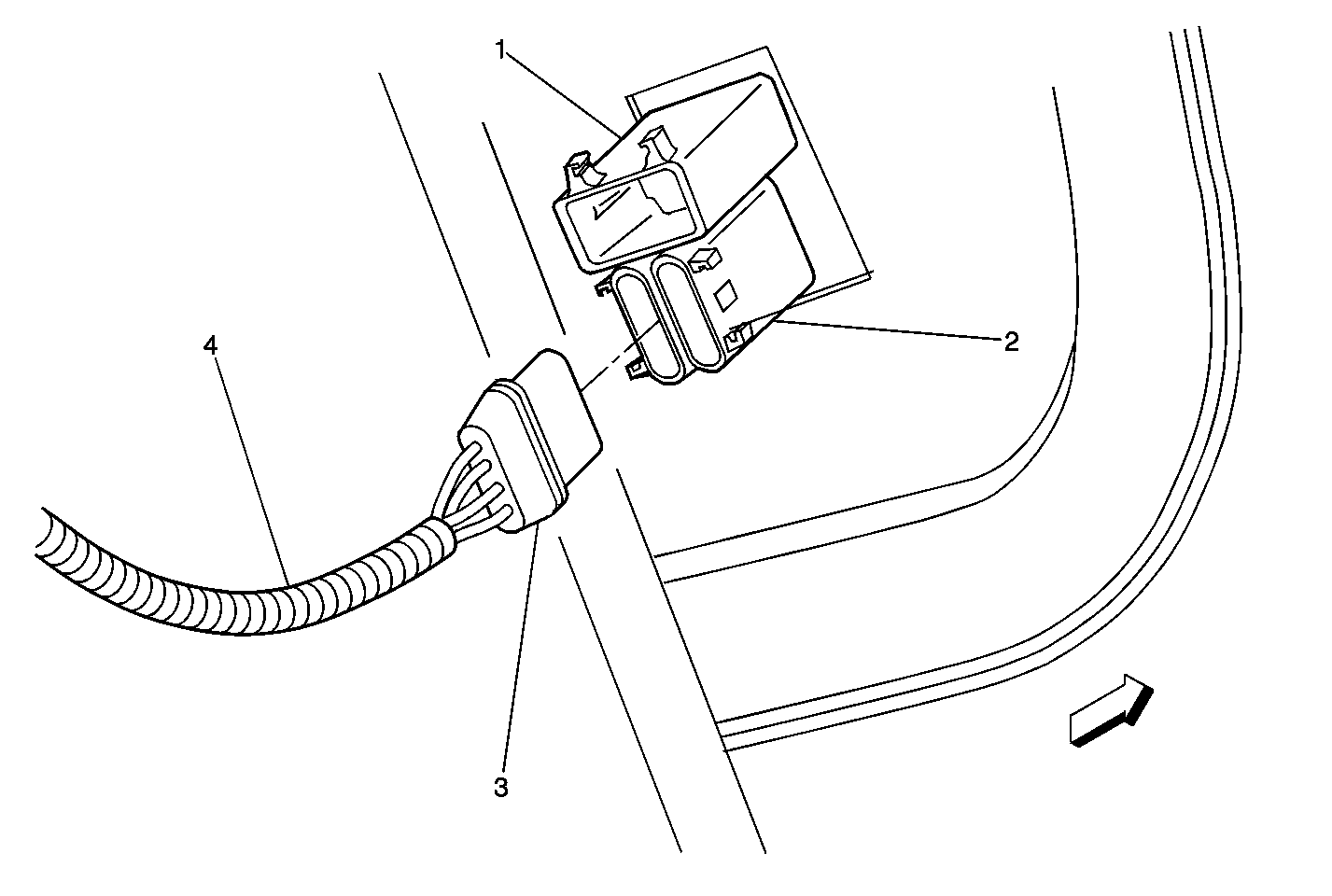
Circuit Description
The Fuel Level Sensor changes resistance based on fuel level. The Fuel Level Sensor has a signal circuit and a ground circuit. The PCM applies a voltage (about 5.0 volts) on the signal circuit to the sensor. The PCM monitors changes in this voltage caused by changes in the resistance of the sensor to determine fuel level.
When the fuel tank is full, the sensor resistance is high, therefore, the PCM will sense a high signal voltage (fuel tank full). When the fuel tank is empty, the sensor resistance is low, and the PCM senses a low signal voltage (fuel tank empty).
The PCM uses inputs from the Fuel Level Sensor to calculate the total fuel remaining in the fuel tank. This information is then sent to the fuel gauge via the class 2 circuit. The Fuel Level information is also used for misfire and EVAP diagnostics.
This DTC sets when the PCM senses a signal voltage lower than the normal operating range of the sensor.
Conditions for Running the DTC
The ignition switch is in the RUN position.
Conditions for Setting the DTC
| • | The Fuel Level Sensor voltage is below 0.39 volts. |
| • | All conditions present for 6.0 minutes. |
Action Taken When the DTC Sets
| • | The powertrain control module (PCM) stores the DTC information into memory when the diagnostic runs and fails. |
| • | The malfunction indicator lamp (MIL) will not illuminate. |
| • | The PCM records the operating conditions at the time the diagnostic fails. The PCM stores this information in the Failure Records. |
Conditions for Clearing the DTC
| • | A last test failed, or current DTC, clears when the diagnostic runs and does not fail. |
| • | A history DTC will clear after 40 consecutive warm-up cycles, if no failures are reported by this or any other non-emission related diagnostic. |
| • | Use a scan tool in order to clear the DTC. |
Diagnostic Aids
Important:
• Remove any debris from the PCM connector surfaces before servicing
the PCM. Inspect the PCM connector gaskets when diagnosing/replacing the PCM.
Ensure that the gaskets are installed correctly. The gaskets prevent water
intrusion into the PCM. • For any test that requires probing the PCM or a component harness
connector, use the J 35616
connector test adapter kit. Using this kit prevents damage to the harness/component
terminals. Refer to
Using Connector Test Adapters
in Wiring Systems.
The vehicle fuel gauge displays empty with this DTC set.
Using Freeze Frame and/or Failure Records data may aid in locating an intermittent condition. If you cannot duplicate the DTC, the information included in the Freeze Frame and/or Failure Records data can aid in determining how many miles since the DTC set. The Fail Counter and Pass Counter can also aid determining how many ignition cycles the diagnostic reported a pass and/or a fail. Operate the vehicle within the same freeze frame conditions (RPM, load, vehicle speed, temperature etc.) that you observed. This will isolate when the DTC failed.
For an intermittent, refer to Symptoms .
Test Description
The numbers below refer to the step numbers on the Diagnostic Table.
Step | Action | Value(s) | Yes | No | ||||
|---|---|---|---|---|---|---|---|---|
1 | Did you perform the Powertrain On-Board Diagnostic (OBD) System Check ? | -- | ||||||
Is the Fuel Level sensor voltage above the specified value? | 0.39V | |||||||
3 |
Does the scan tool indicate that this diagnostic failed this ignition? | -- | Go to Diagnostic Aids | |||||
4 |
Is the Fuel Level sensor near the specified value? | 5V | ||||||
5 |
Did you find and correct the condition? | -- | ||||||
6 |
Did you find and correct the condition? | -- | ||||||
7 | Replace the Fuel Level sensor. Refer to Fuel Level Sensor Replacement . Is the action complete? | -- | -- | |||||
8 |
Important:: Program the replacement PCM. Refer to Powertrain Control Module Replacement/Programming . Replace the PCM. Is the action complete? | -- | -- | |||||
9 |
Does the scan tool indicate that this test ran and passed? | -- | ||||||
10 | Select the Capture Info option and the Review Info option using the scan tool. Does the scan tool display any DTCs that you have not diagnosed? | -- | Go to the applicable DTC table | System OK |

